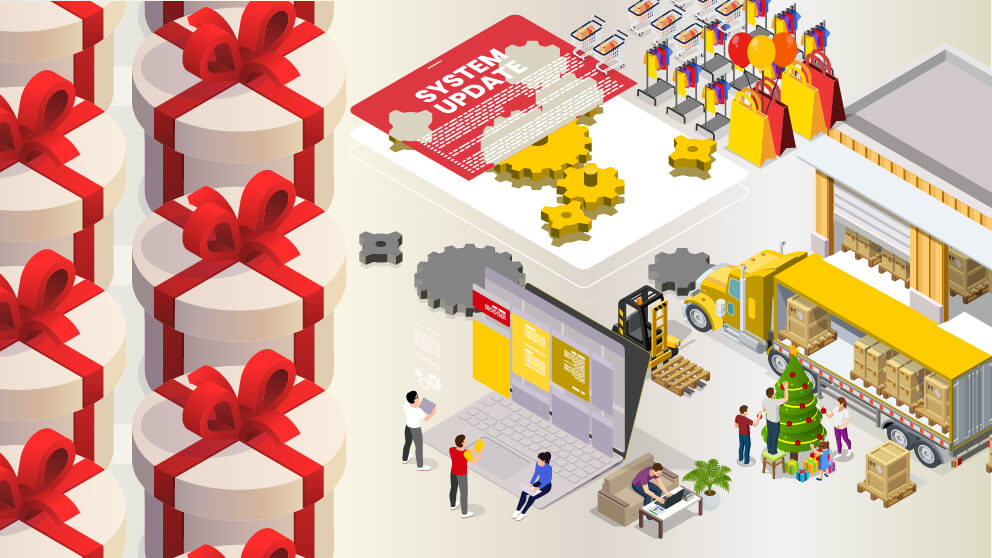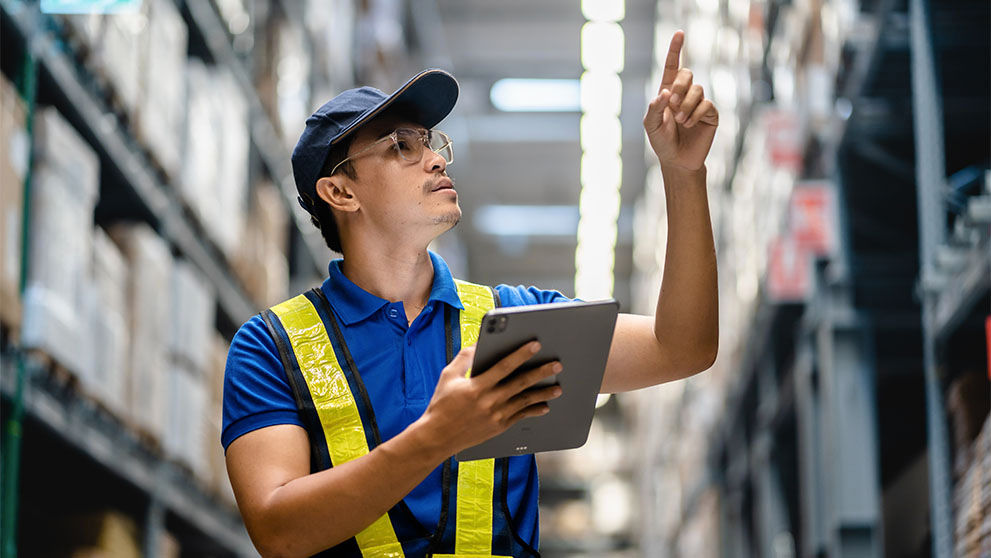Singles day, Black Friday, Cyber Monday and Christmas are all coming soon, which means your e-commerce business should be preparing now. From marketing to order fulfillment, follow our guide to ensure you’re ready for the peak trading season.
For retailers, Fall represents the busiest shopping period of the year - the peak season. Typically kicking off on Black Friday (25th November this year), it is followed by Cyber Monday (28th November), and then Christmas. Furthermore, in recent years, China’s Singles' Day (11th November) has also crept onto the radars of shoppers outside China, which means it should be in your sales calendar too.
Many e-commerce retailers offer deals earlier and earlier each year to cash in on the buzz, which means your business should be preparing now. Here’s how to prime your marketing arsenal, gear up your supply chain and make sure you can maximize every sales opportunity this peak season.
Get your sales channels working together
Check you’re selling on the right platforms to reach your target customers – and that they’re working together.
The customer path-to-purchase has become increasingly fluid. They might browse your products on social media and then go in-store to purchase, or head straight to your website to buy after a nudge from a marketing email. Investing in your omni-channel retail strategy means you can offer a consistent brand experience at every touchpoint and use a unified commerce platform to collect all that invaluable customer data along the way.
Ways to make your online and offline channels work together include: flexible in-store pricing to take advantage of showrooming; offering a click-and-collect service; allowing the return of online goods in-store; and setting up a customer loyalty scheme that works seamlessly on and offline.
Create content now
Your marketing content calendar should have been planned already. That way, you’ll be able to focus on selling and inventory management during the busiest period, instead of worrying about how your social feed looks.
Email marketing campaigns, festive competitions and social media posts will all build buzz around your company’s seasonal promotions, and gift guides are sure to be a winner too. Don’t be afraid to use a fun tone of voice across comms – it’s the countdown to Christmas after all!
Get your website in tip-top shape
Your e-commerce website should receive an increase in traffic during the Peak season. So, before that happens, fix any bugs and make improvements.
Is your site prepared to manage the surge in traffic without the page-load speed suffering? Ensure easy navigation with a powerful search bar to help customers find what they’re looking for., Give them product recommendations based on their previous browsing history. Highlight any seasonal offers on the home page.
Remember that customers want an easy and fast checkout experience, so offer Guest Checkout to save having to fill in lots of details. Shoppers are 70% more likely to finalize a purchase if their preferred payment method is displayed at checkout2, so give lots of options for payment.
To ensure your website is operating at the top level for international orders, use DHL’s E-commerce Website Health Check and tick off the features you need.
Don’t forget about mobile
M-commerce is growing faster than ever, so make sure your online store is optimized for the small screen. Have you thought about larger font and button sizes? Removed excess logins and pop-ups? Kept form fields to a minimum?
These factors are crucial to any successful m-commerce strategy.
Use your packaging as an extra marketing tool
The main function of your packaging is to protect your products – so it should be robust, transportable, and easily opened and closed for returns.
However, it can also serve as a powerful marketing tool. Stylish, innovative packaging, and personalized messaging or storytelling, can add a little something extra to your customers’ purchases.
Remember consumers are increasingly eco-conscious when shopping online. Consider using sustainable packaging but be sure to understand the pros and cons of each packaging material, in terms of renewability, timeframe, energy sources needed and availability.
Plan ahead for seasonal demand
It’s called peak season for a reason; it’s not unusual for some retailers to make over 50% or more of their annual sales in the month up to Christmas. Yet knowing exactly which products will be your biggest sellers may take a little digging. A good place to start is to look at your sales analytics from last year’s peak season to see what sold well, what didn’t, and what days are likely to be your busiest.
However, do consider that widespread inflation and the global energy crisis will be causing financial difficulties for consumers in many countries this year. A DHL survey earlier this year stated 26% of US-based SMEs said their international sales had already decreased due to inflation3. This means it’s more important than ever to keep a close eye on industry trends and listen to customers’ feedback on social media to get an idea of their preferences.
In these uncertain circumstances, be ready to adapt quickly – if something isn’t selling as well as you’d hoped offer an extra discount to help shift the stock. Be flexible and willing to price match with competitors too.
Keep in close touch with international suppliers
It’s common practice for sellers to source products and materials from overseas manufacturers, where production is cheaper. But times are trickier than ever for global supply chains.
Following the complications from Brexit and Europe’s VAT de minimis removal, there are now the effects of the war in Ukraine to contend with. The resulting rise in oil and fuel prices is putting increased pressure on businesses throughout the world, especially where transport and logistics are involved.
The problems caused by the pandemic haven’t altogether gone away either. China’s ongoing strict controls are still stalling global supply chains4. For example, truck-drivers are still subject to stringent quarantine and testing rules, which have increased the time taken for goods to reach Chinese ports for export.
If you’re relying on manufacturers from overseas, it’s important to have regular communication both in the run-up and throughout the busy period. You should be checking in with your suppliers several times a week for status updates on all purchase orders so that if there are delays or problems, you can react quickly to find a solution that won’t disappoint customers.
Relying on just one supplier has always had risks, even before the recent global disruptions, so it’s advised to consider diversifying your suppliers. Having more than one gives your business a safety net should unexpected events occur, and there will also be fewer bottlenecks in your production line at times of peak demand.
Manage your inventory
Overestimate demand and you’ll have excess products on your hands that could take months to shift (especially tricky if the goods are seasonal) – but underestimate, and you risk losing customers who try to buy a product from your website only to be told it’s out of stock.
Another challenge lies in store for multichannel retailers. If you’re selling through an e-commerce website and a bricks-and-mortar store, the complexities of tracking all the incoming and outgoing stock increases. An online marketplace adds another channel to monitor. Before you know it, you’re in spreadsheet hell, trying to track inventory across multiple touchpoints, and spending a great deal of time creating listings for each.
Implementing a single inventory management system for all channels will save you time and reduce your mistakes. There are now solutions specifically designed to help multi-channel retailers manage their inventory seamlessly. Jump online and do some research to find the best inventory management system to suit your budget, business needs and the size of your company.
Streamline your processes
Aligning your supply chain processes is something you should be doing anyway, not just during peak season. An order management system (OMS) will monitor data from your various systems to track sales, orders, inventory and fulfillment so that you can get your orders to your customers cheaper and faster.
Ultimately, an agile supply chain is a strong supply chain, and an OMS will help you build that by informing you immediately when orders are cancelled, inventory quantities change, or there are delays with fulfillment, so you can pivot quickly.
Automate your warehouse
Your warehouse will be a thriving hub of activity, so make sure it’s set up to optimize time and space. Consider automating as many processes as possible – whether picking, packing or managing e-commerce returns. Making changes such as altering the layout so that the most in-demand products are closest to the pack stations will save valuable time.
Ask your employees for their suggestions to improve efficiencies. After all, they are the ones on the frontline and can see where time is wasted, or processes are overcomplicated. In the end, your warehouse will certainly rely to some extent on automation – and you don’t need those automated elements breaking down during the peak season! So once you have your facility operating as efficiently as possible, make sure you have all the spare parts needed to keep it that way.
Plan your staffing needs
Bring in extra staff as early as possible so you have time to properly train them.
If you’re going to need extra staff for your warehouse, or to manage overflow storage facilities, start recruiting now. Likewise, if you need to hire temporary staff for your Customer Services call centre or to cope with those inevitable extra returns.
Allow time to onboard the teams and train them to deal efficiently with all your orders. If possible, surge test typical peak demands in your warehouse before the season begins. After all, efficient order fulfillment and customer service is what keeps those customers coming back.
Let a logistics specialist take care of delivery
Inventory and e-commerce supply chain challenges are important considerations for your business, but the only part your customers care about is delivery. They expect international shipping as standard and want their purchases delivered fast and on time. During the holiday season, when a larger proportion of purchases are gifts, customers rely even more heavily on efficient delivery.
Outsourcing your shipping and fulfillment to a reliable, trusted logistics provider like DHL takes the pressure off you and gives you more time to focus on other areas of your business that need your attention during the busy period. Choose a service that is specially designed to make cross-border European e-commerce easy – during the peak season, you’ll notice the benefits more than ever. Your shipping provider should take care of all the complexities of international shipping, so you can expect every delivery to arrive on time and delight your customers.
Make returns work for you
Frustrating as returns are to manage, giving customers a simple, stress-free experience can be the difference between them coming back to your store or not, so make sure you get it right.
You’ll need to think about whether to offer your customers free returns or not. Clearly, consumers love them, and they are one of the key driving factors that persuade online shoppers to buy directly from brands. But many companies are beginning to charge for returns. Every business is different so you’ll need to work out the financials for yours to decide what to do.
If you decide that you are able to offer free returns, think about enabling customers to return to parcel lockers, so your logistics partner can collect more of them from a single location. Not only will this bring costs down, but it will also result in fewer carbon emissions.
If you’re an omni-channel retailer, you can encourage customers to take returns to your brick-and-mortar store. This will cut the cost of returns and it might also give you a chance of an extra sale while they are visiting.
Don’t forget, there are things you can do to make returns less likely in the first place – like including detailed information and high-quality photography or video on your website, so customers can see exactly what they are buying.
Plan your after-sales strategy in advance
Peak season may bring new customers to your store and you’ll want to ensure they return. So, while it may seem like thinking a long way ahead, now is also the time to put together your after-sales strategy.
Sending a thank-you email is a nice touch and inviting customer feedback will help you improve your service. You could also send a follow-up email to recommend other products from your store, or offer the customer a discount on their next purchase. It all strengthens the links between your brand and your customer, and improves the chances of them buying from you again.
Finally, we hope you’ve found this toolkit useful and wish you every success with 2022’s peak season!
1 - Wunderman Thompson Commerce, Marketing Charts, May 2020
2 - 2Checkout blog, June 2020
3 - Supply Chain 247, May 2022
4 - CNBC, August 2022
5 – Unleashed Software, October 2021








